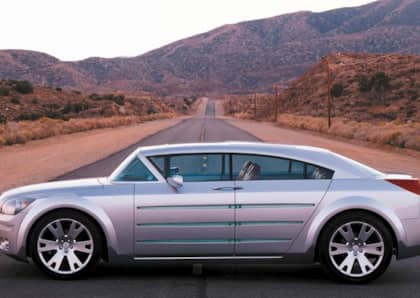5 Predictions for 2020's Muscle Car Future
With each passing year the outlook for muscle cars seems to be traveling in two paradoxical directions.
There has never been a better time for gearheads obsessed with stuffing ultimate power under the hood, whether that comes in the form of factory models like the obscene Ford Shelby Mustang GT500, or the Dodge Challenger SRT Hellcat Redeye, or from any of the extensive parts catalogues offered by the vast universe of aftermarket go-fast suppliers.

At the same time, squint down a long enough corridor and the prospect for muscle machines begins to dim. Cheap speed may be the current order of the day, but environmental and regulatory realities are conspiring against the proliferation of unfettered cubic inches. While some muscle fans might be flashing back to the early 70s and the nightmare that followed, fortunately modern technology has advanced to the point where performance can be preserved while still meeting stringent restrictions on engine size and fuel type.
The power isn't going anywhere, necessarily—it's just going to be generated in a very different way, and likely come in a package that's also unfamiliar. Here are my predictions for what the next decade holds for muscle cars.
1. Expect Hybrid Drivetrains
At this point, electrification is unavoidable for performance cars, and muscle machines are no exception.

Already a staple in the world of exotics seeking to squeeze out every last potential iota of speed from a given drivetrain, battery-assisted setups will first make themselves known by way of 48-volt mild hybrid systems. Soon afterwards, they'll branch out to include electric motors that interact directly with the drive wheels, providing that mainline shot of torque that will guarantee face-peeling acceleration even as electrons begin to edge out cubic inches.
2. Turbos, Too
Speaking of replacements for displacement—look for turbochargers to bridge the gap between today's naturally-aspirated muscle car motors and the hybridized setups that should be more common by the middle of this decade.

Although superchargers are the current hotness at Ford and FCA, the efficiencies offered by turbos (especially with the smaller engine sizes that will begin creeping under the hoods of most models), are more appealing from an engineering perspective. It's a strategy that has already delivered exceptional performance from European in-house tuners like AMG and BMW M, which offer an exclusively turbocharged line-up.
3. SUVs Will Continue To Steal The Thunder—And The Nameplates
There's no denying that sport-utility vehicles and their crossover cousins have taken over the auto industry. With dozens upon dozens of variants available at almost every price point, it's only natural that muscle haulers will play an increasing role as well—and in some cases, even take over for vehicles that were once branded as traditional coupes and sedans. Vehicles like the Jeep Grand Cherokee SRT and the Grand Cherokee Trackhawk are the tip of a spear that includes the Ford Explorer Hybrid (what with its 400 horsepower), the Dodge Durango SRT, and of course the litany of hyper-muscled BMW, Mercedes-Benz, and Audi people movers that leverage all-wheel drive into exceptional straight-line speed.

Then there's what's happening with the Mustang. Ford is in the midst of attempting to create a family of vehicles wearing the iconic name, including an electric crossover and potentially a four-door sedan. The latter is less and less likely as time goes on, but don't discount the possibility of a slew of Mustang SUVs hitting the streets, with at least one attempting to match the coupe in terms of raw power.
4. Pickups Keep V8s Alive
Fear not, V8 fans, because as long as there are traditional pickup trucks on the market there are likely to be eight-cylinder engines chugging away between their front fenders. Although Ford has gone all-in with turbocharging and currently only offers a single V8 with the F-150, every other truck manufacturer has continued to develop eight-cylinder units for most of their line-up.

Modern street trucks aren't all that interesting from a performance perspective, but at the very least this guarantees a supply of project engines for shops and builders if the muscle world downsizes below the V8 threshold.
5. Old Faces Gone Completely
There will be casualties as the 2020s reshape the muscle car world, and that includes familiar names disappearing from the landscape. Case in point? It's unlikely that we'll see a seventh-generation Chevrolet Camaro, with the current model pegged to disappear after the 2023 model makes its final bow. A victim of slow sales and a general disinterest in passenger cars at General Motors, the Camaro may be one of the vehicles lending its street cred to a crossover-based replacement as mentioned earlier in this piece.

It wouldn't be the first time that the Camaro has left the scene, as it took a vacation from dealer lots for nearly a decade during the 2000s. While the Mustang's future seems assured, could the Challenger morph into an SUV, or even disappear completely should FCA's accountants realize that the upcoming move to an Alfa Romeo-sourced platform might not make financial sense? Anything is possible.
Does Detroit still care about fun cars? We answer that with a hard, "yes."











